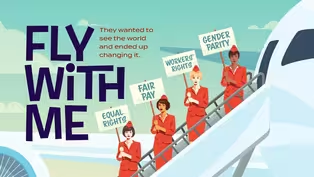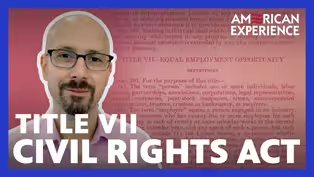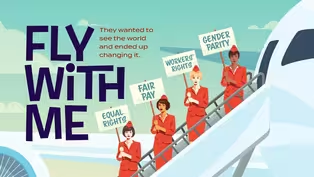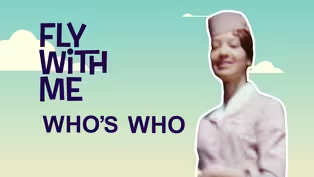
Civil Rights in the Sky: The woman who paved the way for Black flight attendants
Clip: Season 36 Episode 2 | 4m 53sVideo has Closed Captions
Learn how Pat Banks Edmiston broke barriers in the sky.
The struggle for equal opportunity in the airline industry was turbulent—but one Black woman’s challenge opened the doors for change. Learn how Pat Banks Edmiston broke barriers in the sky and paved the way for those who came after her.
Problems playing video? | Closed Captioning Feedback
Problems playing video? | Closed Captioning Feedback
Corporate sponsorship for American Experience is provided by Liberty Mutual Insurance and Carlisle Companies. Major funding by the Alfred P. Sloan Foundation.

Civil Rights in the Sky: The woman who paved the way for Black flight attendants
Clip: Season 36 Episode 2 | 4m 53sVideo has Closed Captions
The struggle for equal opportunity in the airline industry was turbulent—but one Black woman’s challenge opened the doors for change. Learn how Pat Banks Edmiston broke barriers in the sky and paved the way for those who came after her.
Problems playing video? | Closed Captioning Feedback
How to Watch American Experience
American Experience is available to stream on pbs.org and the free PBS App, available on iPhone, Apple TV, Android TV, Android smartphones, Amazon Fire TV, Amazon Fire Tablet, Roku, Samsung Smart TV, and Vizio.
Buy Now
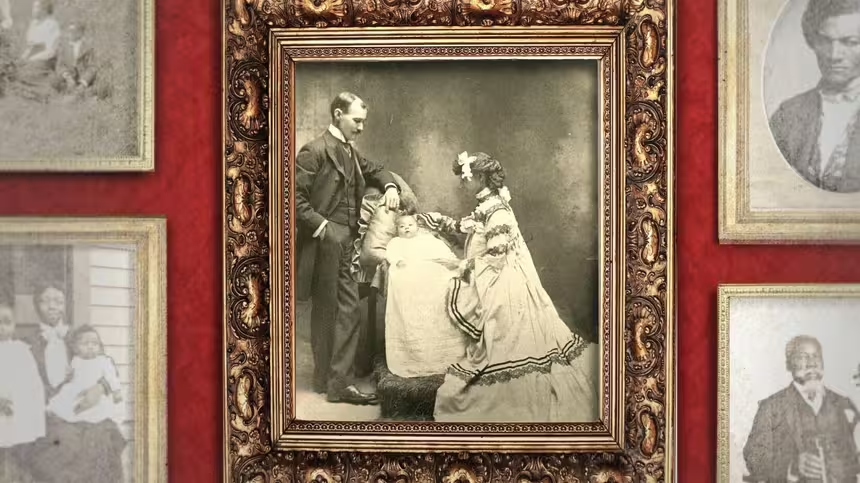
When is a photo an act of resistance?
For families that just decades earlier were torn apart by chattel slavery, being photographed together was proof of their resilience.Providing Support for PBS.org
Learn Moreabout PBS online sponsorshipMost histories about the Civil Rights Movement focus on marches and sit ins.
But there is a crucial racial justice battleground often overlooked, and it unfolded in the sky.
The South, it was open, clear.
That white people had this advantage, Black people had no advantage.
I'm in New York.
It's not as vivid.
And then when the airline situation occurred, it just opened my eyes totally.
Yes, it exists here.
It exists.
The struggle for equal opportunity in the airline industry was turbulent.
But, one woman's challenge opened the doors for change.
The one thing that has to be clear, discrimination is a very difficult thing to prove.
When Pat Banks graduated from Grace Downs Air Career School in 1956, she expected to be hired as a flight attendant.
Despite her impeccable credentials, Pat did not receive a single offer.
I was determined that somebody of African American heritage was going to get this job.
Pat sued Capital Airlines for their racially discriminatory hiring practices.
Finally, in 1960, after nearly four years, she won her case.
I wouldn't do anything that may have led to a mistake.
I had to be this perfect human being.
And the only way I could do that was to do my job and prove that this job could be done and accomplished by an African American woman.
Pat opened the doors.
But the doors weren't kicked open; they were cracked.
The first Black flight attendant for Delta was hired in '66 and then I was hired in 1971.
Nearly a decade after Pat won her case.
By the start of the 1970s, there were about 1,000 Black women employed across all of the airlines.
At the time, this accounted for only 3% of the total number of flight attendants in the country.
When I went in to National Airlines for the interview, I never considered my skin tone as a problem.
Just being able to communicate with individuals, customer service, that's what I thought it was all about.
I didn't think of color at all.
Once I completed the training, I realized that the company, National Airlines, did not want me.
When I would see certain captains, I knew scheduling was going to pull me off the flight because they refused to fly with me.
Passengers would not make eye contact.
If you asked if they wanted something to drink, they would not talk to you.
But then when the white stewardess came along, they would beckon for them to come.
So you understood that.
This is when you talk to the other stewardesses, and we started comparing notes.
In 1973, Undra Mays joined the union that represented flight attendants.
If someone of color had a problem, I would be the one there.
I would be the one there to quote policy and procedure to the company and tell them what we will and will not accept or do.
Mays worked as a flight attendant for 50 years.
Casey Grant worked for Delta Airlines for 35 years.
I never became discouraged by racism.
I knew that I could do the job better than half of the girls I was flying with because I tried harder.
I knew the world was not all bad.
I never became discouraged because no one was going to take this opportunity from me.
Pat Banks was inducted into the Black Aviation Hall of Fame in 2010.
I think that most of the heroes in aviation, the common thread for all those people that have opened the doors, was being determined and never taking no for an answer.
When you want something, you fight for it.
Video has Closed Captions
Clip: S36 Ep2 | 10m 5s | Watch a preview of Fly with Me. (10m 5s)
The surprising reason why women were included in the 1964 Civil Rights Act | What The History?!
Video has Closed Captions
Clip: S36 Ep2 | 3m 43s | Did you know that the Civil Rights Act of 1964 wasn’t supposed to include job protections for women? (3m 43s)
Video has Closed Captions
Preview: S36 Ep2 | 2m 2s | The lively but neglected history of the women who changed the world while flying it. (2m 2s)
Providing Support for PBS.org
Learn Moreabout PBS online sponsorshipSupport for PBS provided by:
Corporate sponsorship for American Experience is provided by Liberty Mutual Insurance and Carlisle Companies. Major funding by the Alfred P. Sloan Foundation.


